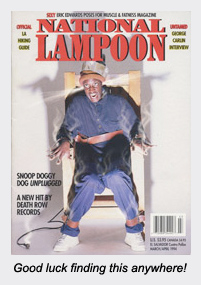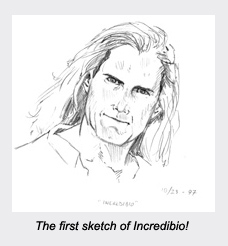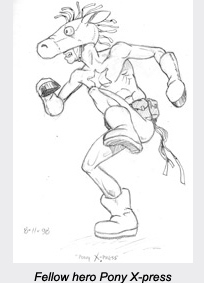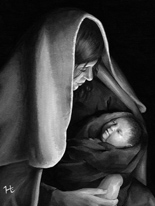Joe Comics • history •
Introduction
If super powers existed, what would the odds be of having a super power? 1 in 1000, maybe? And with that power, what are the odds of getting a good, useful power? 1 in 10? And what are the odds of having the skill required to fashion a really high quality costume? 1 in 30? And what are the odds of being handsome or pretty? 1 in 10? Of having a good physique? 1 in 20? Of being fairly intelligent? 1 in 5? Of being emotionally stable enough to handle the responsibility? 1 in 3? Of being financially secure enough to support a super hero life? 1 in 50? That would conservatively put the odds of being the traditional super hero at 1 in 45 billion. So where are the dorks with the lame powers dressed in stuff they found in the basement who haven't hit the gym in a few years and scored a 650 on the SAT? Answer: HERE.
Welcome to Joe Comics, a serialized satirical celebration of just how ridiculous super heroes and villains can be, especially when those heroes and villains are about as cool as the fans who dress up at comic book conventions. Not that there's anything wrong that. Our stories are just like the classic serial adventure strips of yesteryear, if only they'd been written by a couple of nincompoops. So sit back, relax, and enjoy our world of super powers, heroes, villains, and of course, absolute idiocy.
History

To explore the origins of Joe, you'll need to come with me on a journey in the Way Back Machine. Alright. In the beginning, there was darkness. Wait! That's too far back! Let's jump ahead to the Great Comics Glut of 1993. Like everyone who fancied themselves even the slightest bit creative that year, we decided to self publish a comic book with a few friends of ours (we being my brother Gabe Hernandez, and of course, me; our friends being Mark Brown, Monte Moore, and our esteemed editor-in-chief who couldn't even spell chief correctly, Robb Ogden). We called our "company" Legend Comics, and our first book was the tiny blip on the radar screen known as Lords #1. Suffice it to say, the book was such a resounding success that Lords #2, although the art was finished, never saw the light of day. At the San Diego Comic Convention that summer, where we were pushing Lords in the small press area, Dark Horse Comics was publicizing the launch of their new imprint, Legend, backed by industry heavyweights Mike Mignola, John Byrne, Art Adams, and Frank Miller. And so it was that Legend Comics was stomped out of existence with barely a whimper. Frustrated, I said, "Well, it obviously doesn't pay to try to come up with a cool sounding name for a company. We should have gone with something lame and generic like 'Joe Comics'."
A Hero Is Born
Well, Gabe thought that name was funny, so he did a quick sketch of some goofy guy in a t-shirt and a helicopter pilot's helmet standing at a podium to make an announcement of our name change. His thinking was to have this character be the figurehead of our comic company, but following the disappointing interest we generated for Lords #1, our foray into self-publishing came to an abrupt end. And it's a good thing we never changed the company name to Joe Comics, since JM Straczynski's imprint at Top Cow was later called "Joe's Comics" -- and we no doubt would have been squashed again. Our company was officially defunct, but our character lived on.

One contact we made at the convention that year was an editor at National Lampoon Magazine, who encouraged us to send in a comedy submission. That we did, and in the March/April 94 issue of National Lampoon, Joe Comics made his grand debut to the world, or maybe more accurately, to the 47 people who still read National Lampoon Magazine at the time. Joe's was a six page story featuring our hero fighting against Trend, a send up of the squinty-eyed, high-waisted, boxing-helmeted, shoulder-padded, wrist-banded, pony-tailed super hero that was dominating the industry at the time. We hadn't spent time fleshing out the Joe Comics Universe at this point, but we did know that Joe was a hero without powers who weilded crazy looking weapons, and who's best pal was a lop-eared cartoon rabbit named Clumpy. Unfortunately for us, National Lampoon Magazine went out of business shortly after Joe's appearance, and we swear it had nothing to do with our story.
Born Again
In 1997, a small publisher in Denver put out a small black and white magazine called New Comics, where he featured new comic strips from local artists. Thinking "why not?", my brother and I whipped up two 4-panel strips of Joe Comics, and lo and behold, they made it into the book. These two strips served as Joe's introduction to the world, and we had great plans to continue with the strip, right until New Comics vanished. Again, this had nothing to do with us. And so, busy with other projects, we shelved Joe Comics for the time being, but we spent the next several years developing Joe's world with different characters and story ideas.


In addition to Clumpy, the Joe Comics Universe was now populated with two of Joe's neighbors, Kate and Incredibio, the latter being a sexy male model from a small island somewhere in the Mediterranean. We also created countless villains, such as Mr. Roboto, Palindrome, Viscious Moth, as well as heroes to fight alongside Joe, like The Dumb Friends League, Pony X-press, D'Orca, Slo-Mo, and many others. In 2001, we finally threw down and sent Joe Comics as a submission to all of the major syndicates. One by one, the rejection letters arrived, yet some were at least personalized letters praising the quality of the work, but questioning whether or not newspaper readers would appreciate our parody of the super hero genre. Only United Features expressed an interest and wanted to see more, but they wanted to lean a little farther away from the "superhero stuff" to focus more on the interpersonal relationships. After several series of revisions, it seemed that both sides realized that although the character development was strong, Joe Comics was at its most inspired when dealing with heroes and villains. These black and white comic strips can be viewed in the Strips gallery in the Joe Comics section of the website. Heartbroken, (you can ask my wife), I put away everything we had created for Joe, and eventually made peace with the idea that Joe would never again see the light of day.
Rolling Away The Stone
San Diego Comicon, 2007-- As we sat at our tables in Artists Alley, someone came along and handed us a few postcards for something called Zuda Comics (whatever the heck that was). The more we learned, the more interested we became. It turned out that Zuda was DC Comics' online imprint that would be launching in October of that year, featuring a monthly competition amongst 10 different comics. Each comic was to be an 8-page story of whatever subject matter the creators chose, and the winners of the competitions would be awarded a one-year contract to continue their stories in weekly installments. The two of us spent hours tossing around ideas for stories, some that we had been toying with for the last several years. We were determined to have one of these new ideas developed and ready to go at Zuda's launch. Unfortunately for us, life got in the way. Various art projects reared their heads between July and October of 2007, and the necessary time to fully flesh out ideas and characters for new concepts never availed itself to us. Unwilling to throw together a half-assed submission, we realized we were a long way off submitting a concept that was refined enough for us to be proud of.

Suddenly a thought popped into my head: What about Joe? The more I thought about it, Joe seemed like a perfect match for Zuda. It was a fully developed world with dozens of already created characters and stories that had been subjected to years and years of refinement. Not only that, we also felt the pacing and structure of the storytelling was ideal for the one page a week schedule that Zuda was planning on. When I dug Joe Comics out of storage, I was greatly encouraged to find that this work that I hadn't looked at in over six years still looked really good, and more importantly, still made me laugh. We thought it best to leave Clumpy out of our submission, and later replaced him altogether with the new character of Spencer, Joe's nephew. The Zuda format required certain tweaks to the art (in addition to coloring all of the inked drawings), and I was able to expand what we done before in terms of the introductory narratives for the serialized adventure story feel, as well as the actual dialogue. There just isn't a lot of room for text in a four panel comic strip, so opening up the stories into the larger 4:3 proportions of Zuda's pages really gave us some much appreciated breathing room. I sent in Joe Comics in December, and the editorial staff selected us for the February 2008 competition. Sadly, we finished the month in 2nd place, and resigned ourselves to burying Joe Comics again.
A few months later, Zuda Comics decided to hold the first ever Zuda Invitational in July, with the readership of Zuda voting which past contestants would get a second chance at victory in this All-Star competition. Gabe and I had to crank out 8 new pages of story in a very short amount of time, and we were very pleased with results. While our first 8 pages used old artwork, just resized, organized, and colored for the Zuda layout, this time around we created a lot of new art, intermixed with some old artwork from the strips when it worked to do so. Unfortunately, the competition proved too strong, and Joe Comics finished 4th or 5th (I can't remember anymore). The final product is what you can see in the Pages gallery in the Joe Comics section of the website, and even though we lost, I feel overjoyed that this creation of ours, which has brought us so much mirth and merriment during the creative process, can still be viewed here for all of you to enjoy. Who knows, maybe Joe isn't dead, but is just taking an inordinately long nap.
The Process

First, we feel silly ideas come faster late at night with a couple Cokes down the hatch. After that, we throw goofy ideas around until we can make a few stick with some greater story or character development that we know we'd like to see happen. Then we brainstorm as many funny things as we can come up with that all deal with that same idea. This part is usually handled in thumbnail form so we can get a better idea of space, timing of the jokes, and flow of the panels. From the thumbnails, final panels are penciled (with pencils), inked (a combination of brushes, pens, and sometimes crow quills), and scanned. To the right, you can see rough thumbnails for two strips, followed by the finished black and white art. After being scanned, the panels are lettered in Illustrator and InDesign to create the finished strips. For the complete pages, scans are colored digitally using a Wacom tablet and Photoshop on a Mac Pro. When colors are complete, the panels are arranged in InDesign, where lettering is done and final adjustments to the composition are made. Logos and complex balloons and shapes are made in Illustrator and brought into InDesign for the final layout. Voila!



